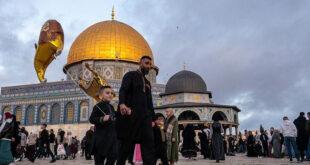Saladin – Salahuddin Ayyubi (Yusuf Salah al din ibn Ayyub) (Arabic: صلاح الدين يوسف بن أيوب; Kurdish: سهلاحهدین ئهیوبی Selah'edine Eyubi; c. 1137 – March 4, 1193), a Kurdish Sultan, known to Europeans as Saladin, especially medieval Europe, was the founder of the Ayyubid dynasty and the liberator of Jerusalem (Al-Quds) from the third Crusade. His name means "righteousness of the faith."
Saladin is remarkable for having earned a reputation as a clement and chivalrous warrior among Christians in medieval Europe. Though the record shows that he committed his share of barbarous acts such as execution of prisoners, his cruelty was mild compared to that of his Christian adversaries. Jews remember Saladin with kindness because the Muslim conquest of Jerusalem ended Jewish exclusion from that city. Because he liberated Jerusalem from foreign rule, Saladin became a role model for modern Arab leaders who want to "liberate" Palestine from Jewish rule, such as Yasser Arafat.
Early life of Saladin
Saladin's father, Najm ad-Din Ayyub, a Kurd, and his family, were from Tovin, a Kurdish town in Northern Armenia, near Georgia, where they were of some consequence. Najm ad-Din's friend, Bihruz, was caught making love to the wife of the local emir and castrated and banished. Bijruz migrated to Baghdad, and Najm ad-Din and his family accompanied him. The Sultan or Caliph of Iraq recognized the talents of Bihruz as an administrator and Najm ad-Din rose to power with him. Bihruz was given Tikrit, in Iraq as a fiefdom and Najm ad-Din became the commander. He invited his brother Asad ad-Din Shirkuh to join him. But Shirkuh, according to tradition, killed the commander of the castle guard who had insulted the honor of a woman. Bihruz was enraged and banished the brothers in 11187. In the same year, Najm ad Din's wife bore him a son, Youssef (Joseph). Najm ad din and Shirkuh fled to Mosul. There theu entered the service of Imad ad-Din Zengi (or Zenghi or Zengy), the Turkish ruler of Mosul, founder of the Zengid dynasty. Zenghi would soon become famous as the Muslim who conquered Edessa from the Christians in 1144. In 1139 Zenghi appointed Najm ad-Din as the commander of his fortress in Baalbek, now in Lebanon. Zenghi's son, Nur al Din, became the ruler of Mosul.
Saladin was a scholarly youth, perhaps more interested in religious than military studies, who also proved himself devoted to Jihad, In this period, the Arab and Muslim empires had splintered and weakened. Chaos ruled much of the Middle East and enabled both the Crusaders and the Mongols to make significant inroads. The Christian conquests had provoked a Muslim reaction. Saladin was sent to Damascus to finish his studies. Meanwhile, Zengy had died and was replaced by Nur Al Din, who crushed the Second Crusade outside the walls of Damascus in 1148.
Saladin becomes ruler of Egypt
When he grew up, Saladin entered the service of his uncle Shirkuh. In 1164 Shirkuh and Saladin briefly conquered Cairo from its Fatimid ruler Shawar. However they were forced to withdraw when Crusader forces came to the aid of Shawar, who was continuously changing his loyalties. Shirkuh had led his troops south to liberate Jerusalem from the Crusaders and became involved in a three way fight with Amalric, King of Jerusalem and Shawar, Fatimid (and then Seljuk for a time) Muslim ruler of Egypt. Shawar allied himself with Amalric and then betrayed him, bringing the Crusader forces into Egypt. Again in 1167, Shirkuh and Saladin advanced to Cairo, but the Crusaders were able to foil their ambitions.
Finally, in 1169, they attacked again as the Crusaders, now against the Fatimids, were beseiging Cairo. Amalric I to retreated from the siege of Cairo with his Crusader forces. Saladin apparently lured Shawar into an ambush and killed him on January 18, 1169. Shirkuh was now ruler of Egypt himself. Two months later he died however, possibly by poison. Nur al Din decided that it was prudent to make the weak, scholarly and youthful nephew of Shirkuh rulter of Egypt, as he would be a pliant subordinate. Thus Saladin came to power.
Saladin was now formally vizier to the last Fatimid Caliph, Al-Adid Leideinallah. Saladin was initially obedient to Nur al Din, expunging the Shia rite from Egypt and restoring the the popular majoritySunni rite in Egypt, thereby gaining the fidelity of the masses. Saladin turned Egypt into an Ayyubid power base. He installed many Kurds in key army positions and rebuilt Cairo as a cosmopolitan city rather than an army garrison town or seat of power. By 1174, Nur al Din, under repeated attacks from Crusaders, was determined to crush the independent Saladin. He prepared for war against Saladin, but he died on May 15, leaving his 11 year old son as heir. At the age of 38, in 1175, Saladin controlled both Syria and Egypt. Saladin began expanding his territories. By 1186, he held Damascus, Syria, Aleppo, and much of Iraq as well as pushing into the Maghreb.
The Frankish rule in Jerusalem was never far from the mind of Saladin and the Muslim world, if we believe the legends. Supposedly, Saladin said, "When Allah gave me the land of Egypt, I was sure that he meant Palestine for me as well." There was also a proverb relevant to his conquest of Aleppo, the 'gray castle" in 1183:
"The taking of the Gray Castle in the month of Safar announces the conquest of al-Quds in the month of Rajab."
 |
 |
| "Artistic" (or imaginary) renderings of Saladin. It is unknown if any likenesses of Saladin are veridical representations based on actual observation | |
Saladin and the Crusaders
While Nur al Din was alive, Saladin thought it best to leave the Crusader state as a safety buffer between Egypt and Syria. However, with the death of Nur al Din, Saladin now controlled both Syria and Egypt, and the Crusader state was in the way. It was not just an ideological or religious issue or an abstract geopolitical concern, since Crusader armies were continually trying to expand their rule and renegade Crusader rulers, especially Raynard, raided caravans, stole merchandise and took captives for ransom.
Saladin's armies had a number of skirmishes with Crusaders. In 1177 he lost the battle against Baldwin IV, the teen age leper king of Jerusalem, who ambushed Saladin at Mont Gisard near modern Ramla with a tiny force that carried a relic of the true cross.
In 1179 Baldwin attempted to build a fortress at "Jacob's Ford" a Jordan River crossing just south of the Sea of Galilee (Lake Tiberias) near what is today "Gesher Bnot Ya'akov" in Israel. The Chastellet fortress would have controlled a major pathway between the two halves of Saladin's empire. Saladin first tried to buy off Baldwin with a huge bribe. When this failed, he besieged Chastellet and dug a tunnel under it, mined and burned the fortress, killing 700 and taking about 800 captive. Baldwin, arriving from Tiberias, was too late to save the fort.
The next year, Baldwin and Saladin signed a truce. However, Raynald, the feudal lord of Kerak (South of Amman) in Transjordan, continued to harass Saladin by land and sea. Raynald and Saladin had signed several truces, but according to the accounts left to us, Raynald was continuously breaking them. Saladin mounted an unsuccessful siege of Kerak in 1183. In 1185, Raynald ambushed a Hajj pilgrimage caravan. According to one story, he kidnapped Saladin's sister and held her for ransom.
In 1186 Saladin was busy attempting to pacify Mosul in Northern Iraq. However, in 1187 he turned is attention to the Crusader "Kingdom of Jerusalem" again. Guy of Lusignan had succeeded to the throne of Jerusalem following the death of Baldwin IV and of Baldwin V. He was opposed by Raymond of Tripoli, who held Tiberias. Raymond invited Saladin to Tiberias. Saladin invaded Palestine and camped near "Karnei Hittin" (the horns of Hattin). He beseiged Tiberias, hoping to lure the Christians, camped at Zippori (Sephoris) into battle.
Guy and Raymond reconciled. The Christian armies, bringing with them a relic of the true cross, fell for the obvious trap and were slaughtered at the Horns of Hittin. Guy and Raynald were captured, Raymond escaped, though he later died of pleurisy. Saladin killed Raynald, as he had betrayed trust and was therefore not a worthy king, but spared Guy.
Guy was imprisoned and other survivors were held for ransom.
In rapid succession, Saladin conquered Acre, Nablus, Jaffa, Toron, Sidon, Beirut, and Ascalon (Ashkelon). On October 2, 1187, Saladin conquered Jerusalem. His reputation for clemency may stem from his sparing of Christians in that city, unlike the Christian conquerors, who had slaughtered and expelled the Muslims. He also allowed clerics to remove the very considerable treasury of the church, though this went a bit beyond the provisions of the treaty.
The arrival of Richard the Lionhearted (Richard I, Coeur de Lion) and Philip of France in the Third Crusade, stopped the advance of Saladin and saved a part of the coast of Palestine for the Crusaders. On September 7, 1191, King Richard defeated Saladin at the battle of Arsuf. Richard began an attack on Jerusalem, but was forced to return to England in order to deal with the machinations of his brother, John. He therefore signed a peace treaty with Saladin, under which Christian pilgrims would be allowed to visit Jerusalem and church property would be respected.
Conquests of Saladin
The map shows the extent of the conquests of Saladin. Click here for a larger map of the Conquests of Saladin.
Death of Saladin
Saladin died of a protracted fever and the effects of the usual incompetent medieval ministrations on March 4, 1193, at Damascus. He called his standard bearer, according to legend, and said:
You, who have borne my banner in the wars, carry now the banner of my deth. And let it be a vile rag which you shall bear through all Damascus upon a lance and proclaim, 'Lo at his death the King of the East could take nothing with him save this cloth only.' (Reston, James, Warriors of God, Faber and Faber 2001, p 317)
Supposedly Saladin had given most of his money away for charity, as was discovered after his death. He had founded numerous universities and hospitals, none of which were to be named for him. He was buried first in the citadel, and then about two years later in an impressive mausoleum in the garden beside the Umayyad Mosque in Damascus, Syria. Engraved on his tomb were the words: "Almighty God! Let his soul be acceptable to thee and open to him the gates of Paradise, that being the last conquest for which he hoped."
In the 19th century, Emperor Wilhelm II of Germany donated a new marble sarcophagus to the mausoleum.
Legacy of Saladin
Saladin was an extraordinary general, scholar and personality in his own right. In the West, his reputation was magnified by two circumstances. He was the first real contact that Europeans had with a representative of superior Muslim civilization. Compared to the semi-barbarous, venal, cruel, superstitious and quarrelsome European knights, Saladin really loomed larger than life. Saladin was also an enemy who had beaten the Europeans and the status of this enemy had to be commensurate with the size of the defeat.
In the Muslim world he was gratefully remembered as the liberator of Jerusalem from the Crusaders. Paradoxically, he became a hero of Arab nationalists, though he was a Kurd and not an Arab. Arab leaders and dictators such as Saddam Hussein, Gamal Abdel Nasser, Yasser Arafat and Hafez Assad tried to compare themselves with him and set him up as their role model. The eagle of Salah al Din became the symbol of the Egyptian, Iraqi, and Palestinian revolutions. The Kurd Saladin became the Messiah of Pan-Arabism James Reston III wrote:
Until this day Saladin remains a preeminent hero of the Islamic world. It was he who united the Arabs, who defeated the Crusaders in epic battles, who recaptured Jerusalem, and who threw the European invaders out of Arab lands. In the seemingly endless struggle of modern-day Arabs to reassert the essentially Arab nature of Palestine, Saladin lives, vibrantly, as a symbol of hope and as the stuff of myth. In Damascus or Cairo, Amman or East Jerusalem, one can easily fall into lengthy conversations about Saladin, for these ancient moments are central to the Arab sensibility and their ideology of liberation. On the bars of the small, dimly lit cell in the Old Cirty of Jerusalem where Saladin lived humbly after his grand conquests is the insription, "Allah, Muhammad, Saladin." God, prophet, liberator. Such is Saladin's relation to the Muslim God.
The Arab world, it seems, is forever waiting for another Saladin. At Friday prayer, from Aleppo to Cairo to Baghdad, it is not unusual to hear the plea for one like him to come and liberate Jerusalem. His total victory over the Crusaders at the Battle of Hattin is held up today as the everlasting symbol of Arab triumph over Western interference. In Damascus, near the entrance to the central Souq al Hamadiya, a heroic equestrian statue of Saladin graces the main plaza of the city. When protests take places, as they did recently over the renewed negotiations between Israel and Syria about disputed lands, the gathering places is Saladin's heroic statue. In the office of the late president of Syria, Hafez Assad, an epic painting of the Battle of Hattin covered an entire wall, and Assad was fond of taking Western visitors over to it, as if to say that just as another Saladin will someday come again, so someday there will be a second battle of Hattin….
But it is not only for his military prowess that Saladin is venerated. He is also remembered for his humility, his compassion, his mysticism, his piety and his restraint. (Reston, James, Warriors of God, Faber and Faber 2001, p xiv-xv)
Salah al Din or Saladin has given his name to numerous places as well as to groups such as the Salah al Din Brigades (also called Nasser Salah al Din), which are the armed wing of the Popular Resistance Committees.
Ami Isseroff
November 14, 2008
Bibliography
Beha ed Din, The Life of Saladin, London: Committee of the Palestine Exploration Fund, 1897.
Madden, Thomas, Crusades – The Illustrated History. Ann Arbor: University of Michigan, 2005.
Regan, Geoffrey, Saladin and the Fall of Jerusalem, London, Croom, Helm, 1987.
Reston, James, Warriors of God, Faber and Faber 2001.
Online:
Abaza, Ismail, Saladin (Salah al-Din Yusuf Ibn Ayyub) and his Cairo
Soufan, Saira W. The Magnanimity of Salah al Din
Synonyms and alternate spellings: Salahuddin, Salah al Din, Salah ed-dine, Salah ad Din Yusuf bin Ayyub
source :http://www.mideastweb.org/Middle-East-Encyclopedia/saladin.htm
Post Disclaimer | Support Us
Support Us
The sailanmuslim.com web site entirely supported by individual donors and well wishers. If you regularly visit this site and wish to show your appreciation, or if you wish to see further development of sailanmuslim.com, please donate us
IMPORTANT : All content hosted on sailanmuslim.com is solely for non-commercial purposes and with the permission of original copyright holders. Any other use of the hosted content, such as for financial gain, requires express approval from the copyright owners.
 Sri lanka Muslims Web Portal Sri Lanka Muslims News Center
Sri lanka Muslims Web Portal Sri Lanka Muslims News Center

 Donate
Donate


